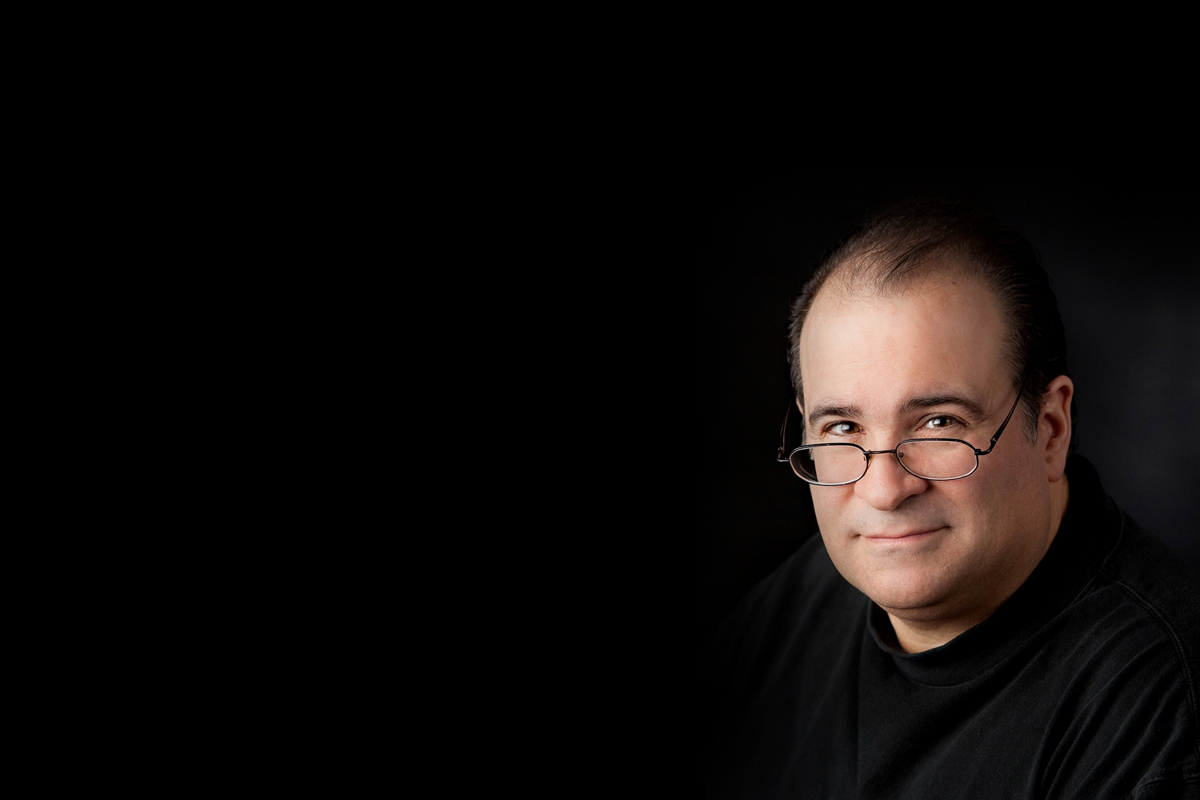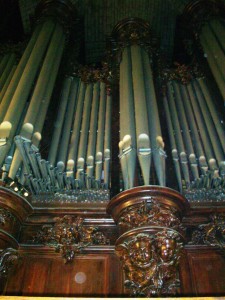I was going to be in Paris on Sunday, November 7, so I wrote to both Notre Dame Cathedral and titular organist Olivier Latry’s management company and asked permission to go up to the loft during Mass. I received word back from management that there are 4 titular organists who rotate duties [one from each of the 4 districts in Paris…different from the 20 arrondissements], and that Philip LeFebvre would be on duty that weekend. So I wrote to him directly and he wrote back directly, very graciously providing the info on how to gain access to the loft that morning.
I arrived in the pouring rain at 6:35 AM, went to my rented apartment, shaved, changed outfit and got to the Cathedral as the 9 AM Mass was ending. I was met by Monsieur Lefebvre’s wife who took me up the spiral staircase to the loft. Upon exiting the stone staircase you are greeted in the face by a dragon-gargoyle of some ilk snarling at you, and you enter an ante-room that holds the Cavaille-Coll console that we see in pictures of Pierre Cochereau, Louis Vierne, etc.
Then you enter the organ loft proper. It is uncluttered and open, with benches against the case for visitors. When I arrived several other visitors were already there, seemingly well-known to the organist. He greeted me right away in pretty flawless English, then excused himself to go play the Processional Music.
As you may know, there are two organists during Mass, one up at the altar to accompany the choir, a stunningly professional and beautiful sounding choir I must say, almost unreal…and the organist at the Grand Orgue in the back under the rose window, where I was.
This organist’s duties consist of playing an intrada or processional music (Mass begins with a choral introit/motet, after which the Grand Orgue plays the intrada music to accompany the clergy and altar servers from the side of the church, winding their way under the organ loft and back up to the front altar. This can take about 4-6 minutes). Then he plays the Kyrie, Gloria and Psalm in alternation with the choir and altar organ, sits it out till Communion and then a Postlude. There are no hymns.
He was very gracious and would talk to his guests, including me, when he wasn’t playing, showing this or that, answering questions, or sitting in his private room.
He doesn’t play repertoire during Mass, only improvisations, which I suppose partly explains the lack of clutter.
There were a few items of particular note I will relate, and then if you are interested, I’d suggest you go to the wonderfully complete website (available in English) for Notre Dame. They list all the organists, give some bios, and provide terrific pix and specs of all the organs over the centuries.
There are a few items I’ll digest for you that were of particular interest to me:
The organ is computer action: not tracker, electric, pneumatic, etc. but computer. There are sensors under the keys that trigger the pallets. It can be faster than electric action, but one can adjust the speed at which it responds, so if you are used to a little delay, you can program it that way.
There are huge cherub faces carved under three of the towers, but there are two towers whose faces are noticeably and violently hacked away. I was told that they weren’t cherub faces but royal coat-of-arms. During the French Revolution, the mob was going around defiling churches and taking the pipes out of organs to melt them down for bullets. When the organist at the time saw them heading for the cathedral, he ran up to the loft {he and his organ-pumper-boy too I suppose} and began playing La Marseillaise. Happy to hear that music, the mob rejoiced and spared the organ, but they chopped away the coat of arms. During all subsequent restorations of the organ, those spots have always been left in their damaged state as a reminder of the Cathedral’s history.

 NOTRE DAME de PARIS - ORGAN CASE BY CAVAILLE COLL 11.7.10
NOTRE DAME de PARIS - ORGAN CASE BY CAVAILLE COLL 11.7.10





